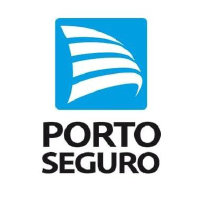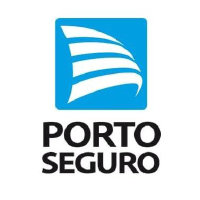
Porto Seguro SA
BOVESPA:PSSA3


| US |

|
Johnson & Johnson
NYSE:JNJ
|
Pharmaceuticals
|
| US |

|
Berkshire Hathaway Inc
NYSE:BRK.A
|
Financial Services
|
| US |

|
Bank of America Corp
NYSE:BAC
|
Banking
|
| US |

|
Mastercard Inc
NYSE:MA
|
Technology
|
| US |

|
UnitedHealth Group Inc
NYSE:UNH
|
Health Care
|
| US |

|
Exxon Mobil Corp
NYSE:XOM
|
Energy
|
| US |

|
Pfizer Inc
NYSE:PFE
|
Pharmaceuticals
|
| US |

|
Palantir Technologies Inc
NYSE:PLTR
|
Technology
|
| US |

|
Nike Inc
NYSE:NKE
|
Textiles, Apparel & Luxury Goods
|
| US |

|
Visa Inc
NYSE:V
|
Technology
|
| CN |

|
Alibaba Group Holding Ltd
NYSE:BABA
|
Retail
|
| US |

|
3M Co
NYSE:MMM
|
Industrial Conglomerates
|
| US |

|
JPMorgan Chase & Co
NYSE:JPM
|
Banking
|
| US |

|
Coca-Cola Co
NYSE:KO
|
Beverages
|
| US |

|
Walmart Inc
NYSE:WMT
|
Retail
|
| US |

|
Verizon Communications Inc
NYSE:VZ
|
Telecommunication
|
Utilize notes to systematically review your investment decisions. By reflecting on past outcomes, you can discern effective strategies and identify those that underperformed. This continuous feedback loop enables you to adapt and refine your approach, optimizing for future success.
Each note serves as a learning point, offering insights into your decision-making processes. Over time, you'll accumulate a personalized database of knowledge, enhancing your ability to make informed decisions quickly and effectively.
With a comprehensive record of your investment history at your fingertips, you can compare current opportunities against past experiences. This not only bolsters your confidence but also ensures that each decision is grounded in a well-documented rationale.
Do you really want to delete this note?
This action cannot be undone.

| 52 Week Range |
25.91
40.22
|
| Price Target |
|
We'll email you a reminder when the closing price reaches BRL.
Choose the stock you wish to monitor with a price alert.

|
Johnson & Johnson
NYSE:JNJ
|
US |

|
Berkshire Hathaway Inc
NYSE:BRK.A
|
US |

|
Bank of America Corp
NYSE:BAC
|
US |

|
Mastercard Inc
NYSE:MA
|
US |

|
UnitedHealth Group Inc
NYSE:UNH
|
US |

|
Exxon Mobil Corp
NYSE:XOM
|
US |

|
Pfizer Inc
NYSE:PFE
|
US |

|
Palantir Technologies Inc
NYSE:PLTR
|
US |

|
Nike Inc
NYSE:NKE
|
US |

|
Visa Inc
NYSE:V
|
US |

|
Alibaba Group Holding Ltd
NYSE:BABA
|
CN |

|
3M Co
NYSE:MMM
|
US |

|
JPMorgan Chase & Co
NYSE:JPM
|
US |

|
Coca-Cola Co
NYSE:KO
|
US |

|
Walmart Inc
NYSE:WMT
|
US |

|
Verizon Communications Inc
NYSE:VZ
|
US |
This alert will be permanently deleted.
 Porto Seguro SA
Porto Seguro SA
Porto Seguro SA
Investor Relations
Porto Seguro S.A., a cornerstone in the Brazilian insurance market, has long established itself as more than just an insurance provider; it's a beacon of financial security and innovative services for millions of Brazilians. Founded in 1945, the company initially carved its niche in auto insurance, swiftly becoming a household name by offering reliable and comprehensive coverage options. Through strategic foresight, it expanded its offerings beyond auto insurance to encompass a wide range of products including health, life, homeowners, and business insurance. This diversification strategy has not only shielded it from market fluctuations but also solidified its reputation as a trusted guardian of customers' most valuable assets and needs, providing peace of mind across various facets of life.
Central to Porto Seguro’s revenue model is its ability to balance risk with profitability effectively. The company generates income primarily through the underwriting of insurance policies and the prudent management of premiums collected from policyholders. By investing these premiums in diverse financial instruments, it ensures a steady income stream, enabling it to cover claims and operational costs. Moreover, Porto Seguro has branched into financial services, including credit cards and personal loans, complemented by its robust customer assistance offerings such as roadside assistance and home repair services, which enhance customer loyalty. This multi-pronged approach not only fuels its revenue growth but also underscores its commitment to embedding itself in every stage of its customers' financial journeys, crafting a symbiotic relationship that leverages trust into lasting business success.

Porto Seguro S.A., a cornerstone in the Brazilian insurance market, has long established itself as more than just an insurance provider; it's a beacon of financial security and innovative services for millions of Brazilians. Founded in 1945, the company initially carved its niche in auto insurance, swiftly becoming a household name by offering reliable and comprehensive coverage options. Through strategic foresight, it expanded its offerings beyond auto insurance to encompass a wide range of products including health, life, homeowners, and business insurance. This diversification strategy has not only shielded it from market fluctuations but also solidified its reputation as a trusted guardian of customers' most valuable assets and needs, providing peace of mind across various facets of life.
Central to Porto Seguro’s revenue model is its ability to balance risk with profitability effectively. The company generates income primarily through the underwriting of insurance policies and the prudent management of premiums collected from policyholders. By investing these premiums in diverse financial instruments, it ensures a steady income stream, enabling it to cover claims and operational costs. Moreover, Porto Seguro has branched into financial services, including credit cards and personal loans, complemented by its robust customer assistance offerings such as roadside assistance and home repair services, which enhance customer loyalty. This multi-pronged approach not only fuels its revenue growth but also underscores its commitment to embedding itself in every stage of its customers' financial journeys, crafting a symbiotic relationship that leverages trust into lasting business success.





























 You don't have any saved screeners yet
You don't have any saved screeners yet
